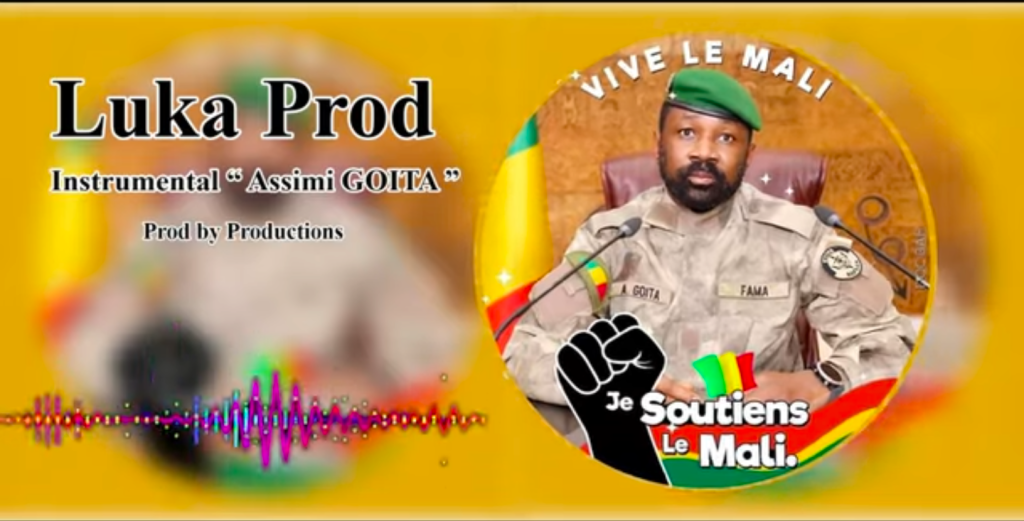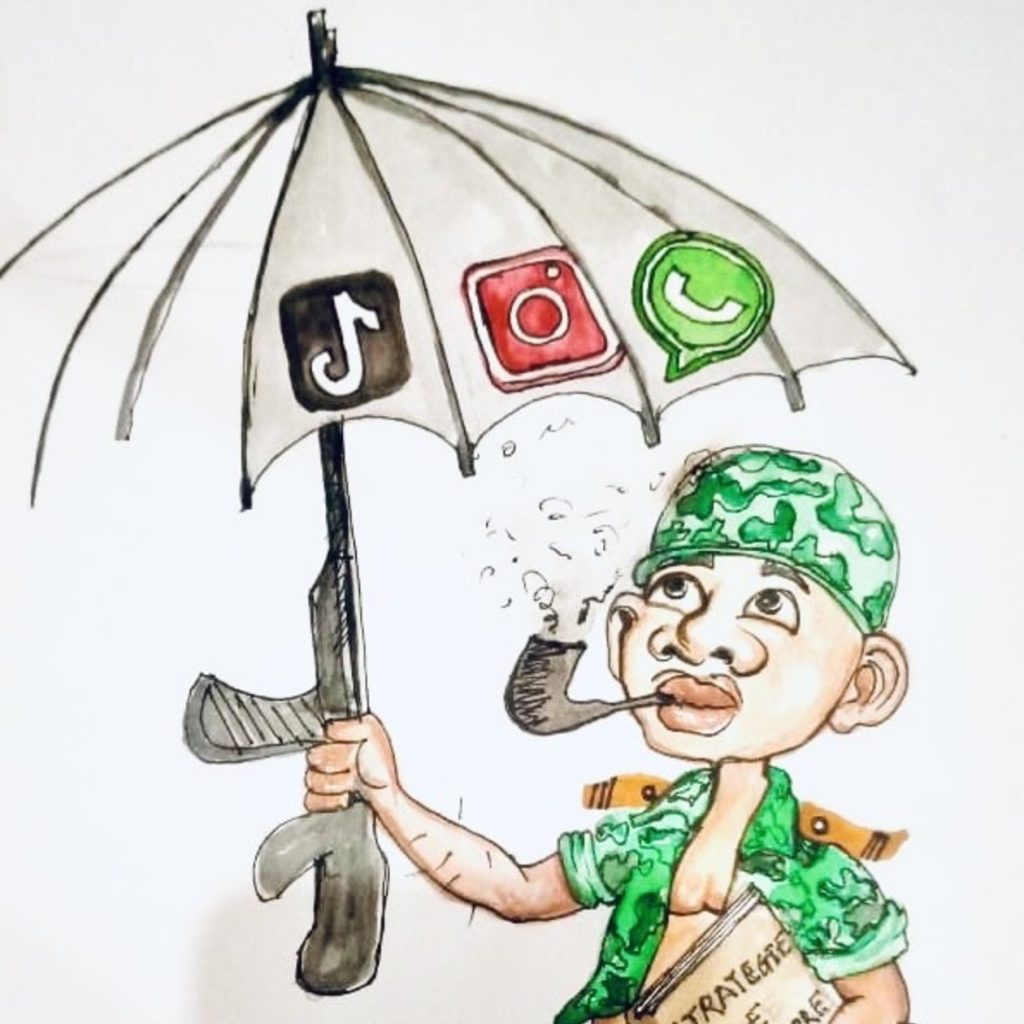An expanding group of Malian TikTok creators amuses its audiences with funny virals, made popular in particular by audio snippets. At the same time, the echoing of content is influenced by Mali’s fragmented context of destabilization and conflict. In this short essay, I question what contemporary audiovisual snapshots depicting war tell about the precarity between conflict and entertainment.

Mali has been tormented by conflict for over ten years. Militant groups occupy parts of the country and attacks near Bamako, the capital, have increased since the end of 2022. In the context of a research project, I actively started searching for TikToks on conflict in Mali. The algorithm quickly pushed similar war content onto the For You Page (FYP), with TikTokers creating, remixing, and replicating meme formats, audio clips, music, emojis, and filters to address violent themes. While some Malians use recordings of speeches, others dance to pro-government rhythms. In this commentary, I address the sounded characteristics of online warfare. I make evident that TikTok is a political space of ambivalent sentiment – a space where light- and heavy-heartedness meet.
Viral Triumph
As the violent conflict in Mali continues, TikTok sound pages are among the digital crossroads where Malians address concomitant issues. Malians stress topics such as the tensions with former colonial power France (see TikTok 1) and the acquisition of jet fighters (see TikTok 2). The accompanying visual representations are frequently tendentious because they glorify the military-led regime and suggest soldiers’ successes on the battlefield, while in reality the conflict is tense and bloody.
For example, this TikToker posted a video with a text and emoji overlay celebrating the collaboration between Russian mercenaries of the Wagner group and Malian soldiers. Meanwhile, commenters suggest the video is misleading because it depicts Nigerian and American soldiers. In the background an audio snippet of «Assimi Goïta» by the internationally acclaimed hip hop artist Luka Production plays. The viral TikTok song is dedicated to the president of Mali who committed a military coup in 2020 and 2021 and sets a celebratory tone to the silent video. In this way the TikToker recreates the message of the video, making it combative and cheerful at once.
TikToks are a low-threshold and entertaining format to engage in politics. Through this everyday activity, Malians amplify their concerns about the conflict and define who is us and who is them. For instance, people creatively and subversively reuse the audio snippet «Gbrrrrrrrrrrrr». In this established meme format, a sequence of two images appears from which the TikToker chooses one by maneuvering their body left or right. Malians use the format to embody their preference for certain nations and politicians (or satirically an animal) involved in the conflict. This «memetic warfare» (Bruls 2022) is innately aural and catchy.
Conveying Aesthetics and Tensions
In the book Sonic Warfare, lecturer in music culture Steve Goodman states that sound is embedded in a history of militarization. He argues that people can use sound as force because sound is affective and can impact feelings. The force is not simply the result of the ideology or belief that sound brings forward, rather it is the seduction, the violence, and the aesthetic dimensions of sonic expression that make crowds move. Furthermore, Goodman highlights the importance of both politics and aesthetics for the way groups mobilize through sound.
The examples introduced above demonstrate that the usage of TikTok sounds is indeed a messy mix of ideology, aesthetics, and violence. The presentation of pressing themes suggests that combining sound and image is one way for Malian media users to make sense of their experiences in a region of conflict. Furthermore, Goodman speculates about how digitalization and algorithms enhance sound’s sensual contagiousness (Goodman 2010, 124). The memetic content shows that sound mutates and spreads. TikTok’s unique data-driven algorithm encourages a participatory culture wherein users share content that is easy to replicate and imitate. Here we see the subtle ramifications of conflict.
Written by Luca Bruls
Visual snap by Boubacar Sissoko
Audio snap by Luca Bruls
This short essay was originally posted on Norient.
List of References
Bruls, Luca. 2022. «Memetic Warfare on Twitter». DDMAC. Last modified on May 12, 2022.
Goodman, Steve. 2010. Sonic Warfare: Sound, Affect, and the Ecology of Fear. Cambridge: MIT Press.


